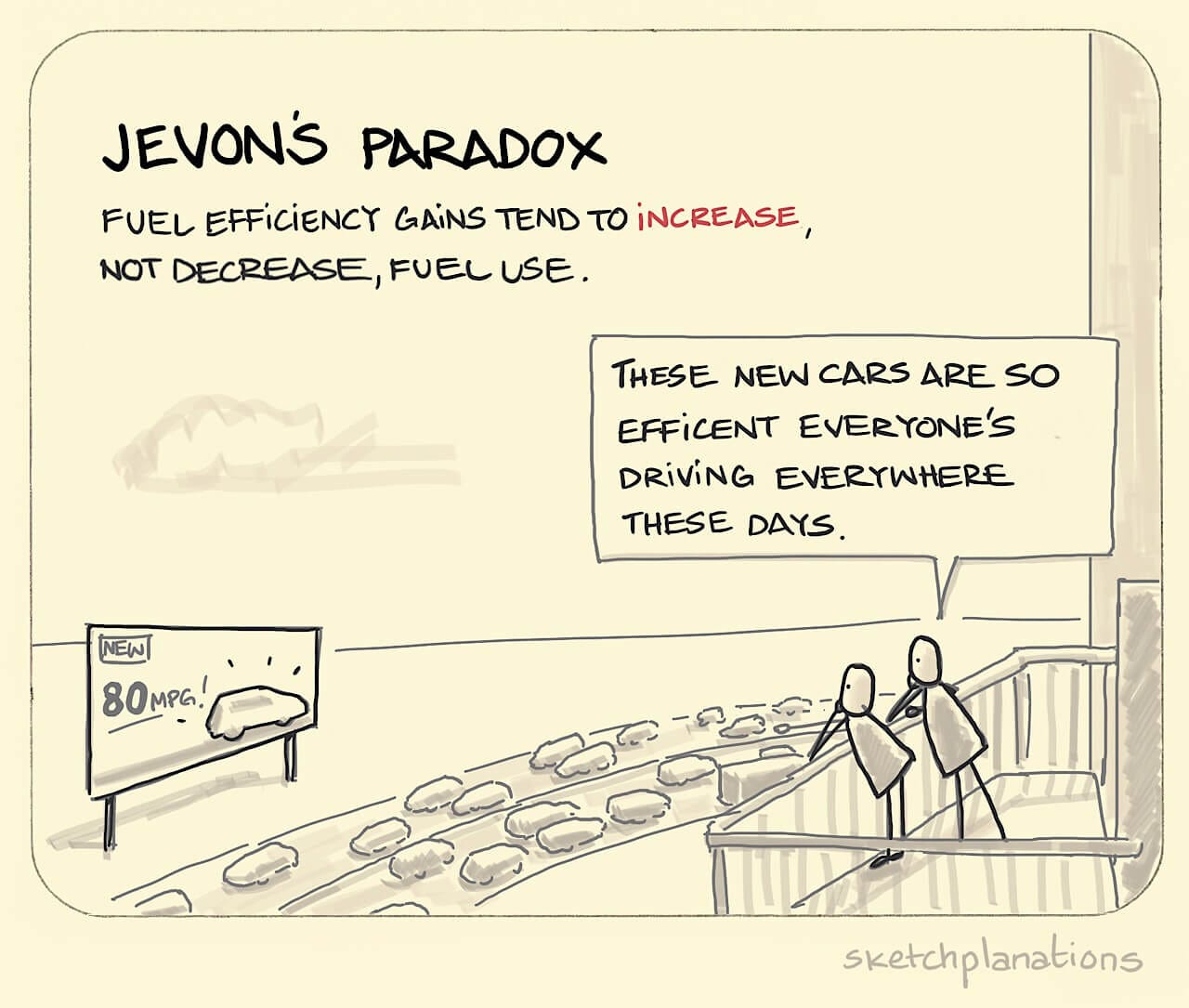The Counterintuitive Bet
Victor Riparbelli, Synthesia's CEO, recently shared their unconventional strategy on our Podcast1: deliberately accepting lower margins on high-quality AI video generation today, betting on dramatically lower costs tomorrow.
On the surface, this might seem risky. But there's a deeper economic principle at play here – one that economist William Stanley Jevons identified over 150 years ago.
Understanding Jevons Paradox
In 1865, Jevons observed something counterintuitive about coal consumption: as steam engines became more efficient at using coal, total coal consumption increased rather than decreased.
This became known as Jevons Paradox – when technology makes a resource more efficient to use, we tend to find many more uses for it, ultimately increasing total consumption.

The AI Parallel
We're seeing this exact pattern play out in AI:
- When GPT API costs dropped by 90%, did companies use one-tenth as many tokens? No – they found hundreds of new use cases
- As image generation got cheaper, we didn't just make fewer expensive images – we started generating images for everything from mockups to marketing variants
- Companies aren't just doing the same things more efficiently – they're discovering entirely new categories of AI applications
This is what makes Synthesia's strategy so brilliant. They're not just betting on cost curves declining; they're betting on Jevons Paradox playing out in video AI. As costs plummet and quality improves, we won't just make today's videos more efficiently – we'll create entirely new categories of video content we haven't even imagined yet.
Practical Implications for AI Companies
This has profound implications for how AI companies should think about strategy:
Don't optimize for today's margins at the expense of tomorrow's market position
Consider how radical cost reduction might transform usage patterns completely
Build for the explosion in demand that follows dramatic cost reduction
Position for new use cases that become possible at lower price points
The Real Opportunity
The real opportunity isn't just in making current processes more efficient – it's in enabling entirely new categories of AI applications that aren't economically viable today.
Synthesia isn't just optimizing for current video production; they're building for a world where AI video becomes as ubiquitous as text documents are today.
Looking Ahead
History shows us that when transformative technologies become radically cheaper, we don't just do the same things more efficiently – we transform how we work entirely. Just as cheap computing power didn't just give us faster calculators but enabled entirely new categories like mobile apps and social networks, cheap AI compute won't just optimize current processes – it will enable entirely new possibilities we haven't imagined yet.
The companies that will win in AI aren't just those who can optimize today's margins – they're the ones positioning themselves for the explosion in demand (that Jevons Paradox predicts!).
They're playing tomorrow's game, not today's.
This analysis is based on public statements and industry observations. For a deeper dive into Synthesia's strategy, check out our recent interview with Victor Riparbelli - see the full episode here.
















Share this post